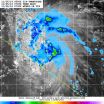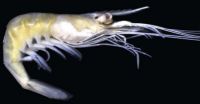INFORMATION:
Starace and Ngoko Djiokap co-authored the study with colleagues from Russia's Voronezh State University; the Laboratory for Laser Energetics at the University of Rochester (N.Y.); and Denmark's Aarhus University.
CONTACT: Anthony Starace, George Holmes University Professor, Physics and Astronomy, astarace@unl.edu
PHOTO: Jean Marcel Ngoro Djiokap (left) and Anthony Starace (photo: Scott Schrage | University Communications)
http://newsroom.unl.edu/releases/downloadables/photo/20141126starace.jpg
UNL study details laser pulse effects on electron behavior
A significant step toward manipulating the most fundamental components of matter
2014-11-26
(Press-News.org) Lincoln, Neb., Nov. 26, 2014 -- By solving a six-dimensional equation that had previously stymied researchers, University of Nebraska-Lincoln physicists have pinpointed the characteristics of a laser pulse that yields electron behavior they can predict and essentially control.
It's long been known that laser pulses of sufficient intensity can produce enough energy to eject electrons from their ultrafast orbits around an atom, causing ionization.
An international team led by the UNL researchers has demonstrated that the angles at which two electrons launch from a helium atom can depend on whether a laser pulse's electric field is right- or left-handed -- that is, whether it rotates clockwise or counterclockwise. The researchers have also calculated the distinct range of angles at which the electrons depart under both conditions.
The authors further confirmed that this effect, which they have coined "nonlinear dichroism," appears only when an atom is struck by a sufficiently short, intense pulse featuring an elliptically shaped electric field.
The study, published in the journal Physical Review Letters, specifically determined that pulses capable of producing this effect last no longer than 200 attoseconds. Counting to one second by intervals of 200 attoseconds per second would take roughly 158.5 million years -- longer than the span that has passed since the end of Earth's Jurassic period.
"The goal in laser atomic physics is to control electron motion and also image it," said Anthony Starace, a George Holmes University Professor of physics who co-authored the study. "To do that, one needs probes that are much faster than the time scale on which electrons move."
However, Starace noted that the exceptionally short duration of attosecond laser pulses -- and the resulting quantum-scale interactions -- can obscure the mechanics underlying laboratory outcomes.
"When things happen on such fast time scales, experimentalists don't always know what they've achieved," he said. "They cannot 'see' how electrons make atomic and molecular transitions. So they need means to ascertain, 'How did we do that?' or, 'What did we have there?'"
The team's paper, Starace said, should help laser physicists address this fundamental and prevalent issue.
"This has applications for timing electron processes," Starace said. "On our human time scale, we think in terms of minutes, but these phenomena take place over inconceivably short fractions of a second. The question is: Are they 10 attoseconds? One hundred? A thousand? No one knows. With these results, we can explore theoretically -- and fairly exactly -- the question of how long electron transitions and processes take."
By identifying and measuring nonlinear dichroism, Starace said, the team's study also offers a new signature that quantum physicists can use to classify experimentally produced laser pulses and verify their results.
"If the experimentalists measure this new effect, they will have information as to how long their pulses are, what polarization their pulses have, and what the shape of their electric field is," Starace said. "These are means to characterize their pulses."
According to Starace, the study represents a significant step toward an even larger goal of laser physics: manipulating the most fundamental components of matter in the known universe.
"If experimentalists can finally produce such pulses reliably, this new effect allows great control over the way electrons move," Starace said. "If we hit a target with the short attosecond pulses that have a particular duration and polarization, we can tell the electrons whether to go one way or another. This is humankind's dream of controlling electrons, rather than just watching them."
Jean Marcel Ngoko Djiokap, research assistant professor of physics, laid the path to the team's findings by programming the first code capable of accounting both for the interactions between two laser-influenced electrons and the complexity of electric fields that move in multiple dimensions.
"Normally, theorists assume an electric field oscillates in one direction only, which reduces the scale of the computation," Starace said. "With elliptical polarization, the electric field sweeps around in a plane. This adds another dimension to the problem, which greatly increases the numerical complexity and the difficulty of doing the calculation. Marcel has solved this problem."
Starace likened the team's computational approach to climbing aboard the elliptical "merry-go-round" of the laser pulse's electric field. Performing calculations from this perspective -- rather than the stationary perspective of those watching from outside -- ultimately streamlined the problem, he said.
"If you're on a merry-go-round, people on the sidelines see you spinning around -- but to you, the horse you're sitting on is stationary," Starace said. "What Marcel has done is move the calculation from the laboratory frame (of reference) to this rotating frame, so that all we see is linearly polarized, one-dimensional light. The whole thing becomes simpler."
ELSE PRESS RELEASES FROM THIS DATE:
Tropical depression 21W forms, Philippines under warnings
2014-11-26
The Tropical Rainfall Measuring Mission or TRMM satellite provided rainfall data as Tropical Depression 21W was making landfall in the southern Philippines on Nov. 26.
TRMM revealed areas of heavy rainfall in fragmented bands east of the center of circulation, where rain was falling at more than 1 inch (25 mm) per hour. TRMM rainfall data was overlaid on infrared data from the Japan Meteorological Agency's MTSAT-1 satellite that showed Tropical Depression 21W's (TD21W) clouds extended from western Mindanao, east into the Philippine Sea.
On Nov. 26, there were a number ...
SLU researcher finds an off switch for pain
2014-11-26
ST. LOUIS-- In research published in the medical journal Brain, Saint Louis University researcher Daniela Salvemini, Ph.D. and colleagues within SLU, the National Institutes of Health (NIH) and other academic institutions have discovered a way to block a pain pathway in animal models of chronic neuropathic pain including pain caused by chemotherapeutic agents and bone cancer pain suggesting a promising new approach to pain relief.
The scientific efforts led by Salvemini, who is professor of pharmacological and physiological sciences at SLU, demonstrated that turning on ...
Minimally invasive disc surgery is a pain in the neck
2014-11-26
Hamilton, ON (Nov. 26, 2014) - McMaster University researchers have found that current evidence does not support the routine use of minimally invasive surgery to remove herniated disc material pressing on the nerve root or spinal cord in the neck or lower back.
In comparing it with open surgery, they found that while minimally invasive surgery for cervical or lumbar discectomy may speed up recovery and reduce post-operative pain, it does not improve long-term function or reduce long-term extremity pain.
Minimally invasive surgery for discectomy also requires advanced ...
Brain researchers pinpoint gateway to human memory
2014-11-26
This news release is available in German. The human brain continuously collects information. However, we have only basic knowledge of how new experiences are converted into lasting memories. Now, an international team led by researchers of the University of Magdeburg and the German Center for Neurodegenerative Diseases (DZNE) has successfully determined the location, where memories are generated with a level of precision never achieved before. The team was able to pinpoint this location down to specific circuits of the human brain. To this end the scientists used a ...
The influence of the Isthmus of Panama in the evolution of freshwater shrimps in America
2014-11-26
The evolution of freshwater shrimps species living in both sides of Central America, isolated by the closure of Isthmus of Panama (3 million years ago) were studied by molecular tools. Despite the small likelihood of species crossing the Isthmus from one side to the other through the channel exist, the genetic isolation of them were maintained over the time and the separation of Pacific and Atlantic sister species still unchanged. Sister species refer to pairs of species that are genetically and morphologically closely related, but reproductively isolated.
The collection ...
More public health interventions required to tackle grim reaper of 'lifestyle' diseases
2014-11-26
A new paper, by Dr Stanley Blue, lecturer in Social Sciences at The University of Manchester, claims that there needs to be a shift in public health policy, with less focus on efforts to change individual behaviour and more attention on breaking social habits and practices that are blindly leading us into bad health.
Theories of practice and public health: understanding (un)healthy practices is published in the journal, Critical Public Health, and written by Dr Stanley Blue, lecturer at the School of Social Sciences, Prof Elizabeth Shove, of Lancaster University, Prof ...
Saving ovaries does not help prevent prolapse for women after menopause
2014-11-26
CLEVELAND, Ohio (November 26, 2014)--Removing ovaries at hysterectomy does not increase a woman's risk of pelvic organ prolapse after menopause. In fact, removing ovaries lowers the risk of prolapse. This surprising finding from a Women's Health Initiative study was published online this week in Menopause, the journal of The North American Menopause Society (NAMS).
Whether to remove ovaries at hysterectomy for reasons other than cancer is a subject of hot debate. Removing them reduces the risk of breast cancer and dramatically reduces the risk of ovarian cancer. On the ...
The mysterious 'action at a distance' between liquid containers
2014-11-26
For several years, it has been known that superfluid helium housed in reservoirs located next to each other acts collectively, even when the channels connecting the reservoirs are too narrow and too long to allow for substantial flow. A new theoretical model reveals that the phenomenon of mysterious communication "at a distance" between fluid reservoirs is much more common than previously thought.
Liquids in containers that are at a distance from each other may behave collectively, even if the channels connecting the reservoirs are so narrow and long that they prevent ...
Classical enzymatic theory revised by including water motions
2014-11-26
Enzymes are macromolecular biological catalysists that lead most of chemical reactions in living organisms. The main focus of enzymology lies on enzymes themselves, whereas the role of water motions in mediating the biological reaction is often left aside owing to the complex molecular behavior. The groups of Martina Havenith (Cluster of Excellence RESOLV - Ruhr explores Solvation) and Irit Sagi (Weizmann Institue of Science, Israel) revised the classical enzymatic steady state theory by including long-lasting protein-water coupled motions into models of functional catalysis. ...
Amazonian shrimps: An underwater world still unknown
2014-11-26
A study reveals how little we know about the Amazonian diversity. Aiming to resolve a scientific debate about the validity of two species of freshwater shrimp described in the first half of the last century, researchers have found that not only this species is valid, but also discovered the existence of a third unknown species. The researchers concluded that these species evolved about 10 million years ago. The study was published in the open access journal ZooKeys.
The great biodiversity in Amazonia is an issue widely studied. However, the real number of species in this ...
LAST 30 PRESS RELEASES:
Making lighter work of calculating fluid and heat flow
Normalizing blood sugar can halve heart attack risk
Lowering blood sugar cuts heart attack risk in people with prediabetes
Study links genetic variants to risk of blinding eye disease in premature infants
Non-opioid ‘pain sponge’ therapy halts cartilage degeneration and relieves chronic pain
AI can pick up cultural values by mimicking how kids learn
China’s ecological redlines offer fast track to 30 x 30 global conservation goal
Invisible indoor threats: emerging household contaminants and their growing risks to human health
Adding antibody treatment to chemo boosts outcomes for children with rare cancer
Germline pathogenic variants among women without a history of breast cancer
Tanning beds triple melanoma risk, potentially causing broad DNA damage
Unique bond identified as key to viral infection speed
Indoor tanning makes youthful skin much older on a genetic level
Mouse model sheds new light on the causes and potential solutions to human GI problems linked to muscular dystrophy
The Journal of Nuclear Medicine ahead-of-print tip sheet: December 12, 2025
Smarter tools for peering into the microscopic world
Applications open for funding to conduct research in the Kinsey Institute archives
Global measure underestimates the severity of food insecurity
Child survivors of critical illness are missing out on timely follow up care
Risk-based vs annual breast cancer screening / the WISDOM randomized clinical trial
University of Toronto launches Electric Vehicle Innovation Ontario to accelerate advanced EV technologies and build Canada’s innovation advantage
Early relapse predicts poor outcomes in aggressive blood cancer
American College of Lifestyle Medicine applauds two CMS models aligned with lifestyle medicine practice and reimbursement
Clinical trial finds cannabis use not a barrier to quitting nicotine vaping
Supplemental nutrition assistance program policies and food insecurity
Switching immune cells to “night mode” could limit damage after a heart attack, study suggests
URI-based Global RIghts Project report spotlights continued troubling trends in worldwide inhumane treatment
Neutrophils are less aggressive at night, explaining why nighttime heart attacks cause less damage than daytime events
Menopausal hormone therapy may not pose breast cancer risk for women with BRCA mutations
Mobile health tool may improve quality of life for adolescent and young adult breast cancer survivors
[Press-News.org] UNL study details laser pulse effects on electron behaviorA significant step toward manipulating the most fundamental components of matter



